Chinese, Japanese and Korean are infamous for ranking among the very hardest languages for native English speakers to learn.
But with their distinctive writing systems, unfamiliar grammar and exotic pronunciation, taking one up may seem like an intriguing challenge.
But how do they work? What makes them so difficult? Are they related? Which takes longest to master? And which is the best option for you to tackle?
In this post, I’ll answer questions like these and more as I give you all the info you need about Chinese vs Japanese vs Korean.
Pro Tip
By the way, if you want to learn Chinese fast and have fun, my top recommendation is Chinese Uncovered which teaches you through StoryLearning®.
With Chinese Uncovered you’ll use my unique StoryLearning® method to learn Chinese through story…not rules. It’s as fun as it is effective. If you’re ready to get started, click here for a 7-day FREE trial.
Table of Contents
Chinese vs Japanese vs Korean: History
Let’s start by talking about the origins of Chinese vs Japanese vs Korean.
The first thing to note is that they are three unrelated languages from completely different language families.
However, due to historical interaction and cultural proximity, they are also intimately connected in many ways, so now let’s have a look at some specifics.
Chinese Language History
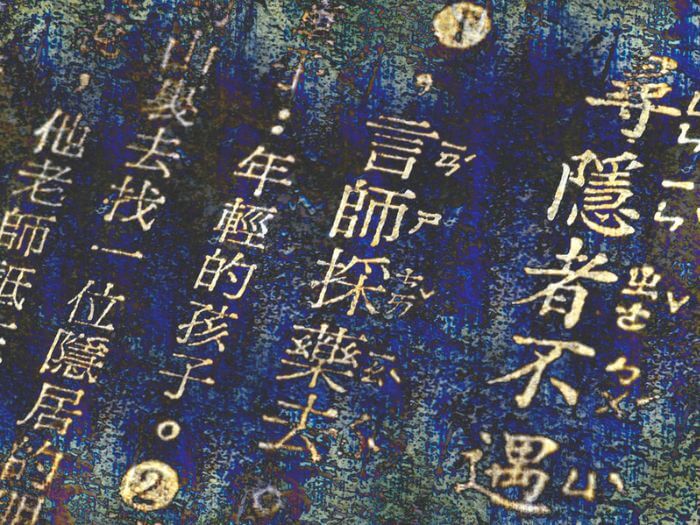
Chinese is the world’s most widely spoken native language. But things are a little more complicated than this simple statement might have you think.
In China, people speak a range of languages that are descended from an ancestor known as Old Chinese.
It was spoken more than three thousand years ago and belongs to the Sino-Tibetan language family, which makes Chinese a relative of Tibetan and Burmese.
Over time, Old Chinese split into mutually incomprehensible languages such as Wu Chinese, Min Chinese and Yue Chinese. Learn more about this in my post on Chinese language history.
This is similar to the way Latin gave rise the modern Romance languages such as French, Italian and Spanish.
Each of the Chinese languages is also divided into many Chinese dialects – Shanghainese is a major dialect of Wu while Cantonese is considered the prestige dialect of Yue.
The most widely spoken Chinese language is what we call ‘Mandarin’, although this too has many dialects. And not all of them are mutually comprehensible.
For example, Sichuanese is considered a dialect of Mandarin, but speakers of Beijing Chinese would have a hard time understanding much of it.
However, in China, all Chinese also learn a standard version of Mandarin known as 普通话 pŭtōnghuà, which translates as ‘common speech’. It is based on the Beijing dialect and is also the language most foreigners learn when they study ‘Chinese’.
So while ‘Mandarin’ has the largest number of speakers in the world, there are fewer first-language speakers of the Putonghua dialect. But this being China, that still means vast numbers of people speak it as their mother tongue!
Japanese Language History
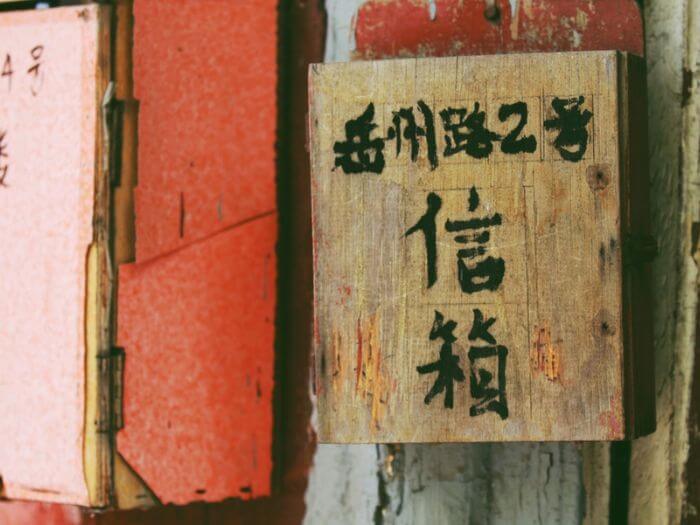
Japanese, on the other hand, belongs to the Japonic language family, which includes only Japanese and the Ryukyuan languages that are spoken in the Ryukyu Islands.
Some scholars believe that Japanese may be distantly related to Korean, although this is far from confirmed. And the Japonic languages are not known to be related to any other known language families.
However, due to cultural contact, Japanese has picked up a large number of Chinese words.
For example, when you say “cheers” in Japan, you say 乾杯 kan pei, which comes from the Chinese干杯 gān bēi – literally meaning “empty cup”.
Other examples include the name of the famous Japanese noodle dish ラーメン ramen, from the Chinese 拉面 lāmiàn (pulled noodles), and 餃子 gyōza, Japanese dumplings, which comes from 饺子 jiăozi, the word for the Chinese original.
Korean Language History
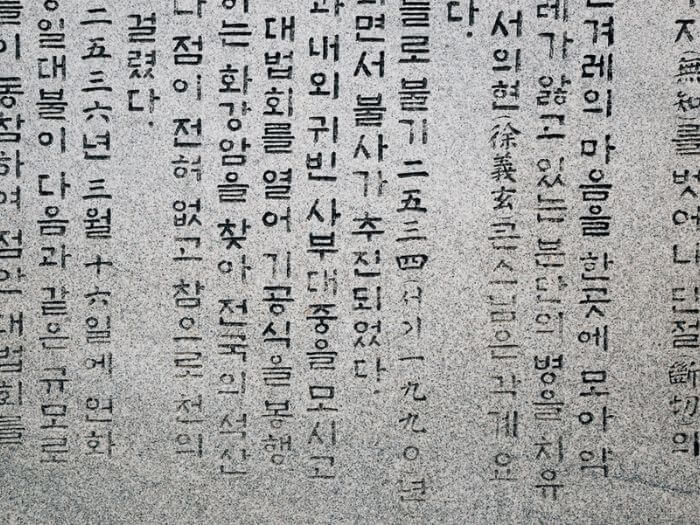
Korean belongs to the Koreanic language family that includes Korean plus the Jeju language.
The origins of Korean are obscure, but there are some theories. Some believe that the Koreanic languages belong to the larger and controversial Altaic language group, which would make Korean related to languages such as Mongolian and Turkish.
Others have suggested a tentative link between Korean and Japanese dating back many thousands of years, but this is also contested.
In any case, for the time being, Korean is considered unrelated to either Japanese or Chinese.
At the same time, like Japanese, Korean has also assimilated a large number of Chinese words, and it is now estimated that as many as 30-60% of Korean words have Chinese origins.
One example is 산 san, which is derived from the Chinese 山 shān – both of which mean “mountain”.
Another interesting example is found in the viral phenomenon “Gangnam Style” by K-pop superstar Psy.
The title of the song refers to Seoul’s lively and chic Gangnam District, which is located ‘south of the river’. In Korean 강gang means “river” while 남nam means “south” – both elements are derived from the Chinese 江南 jiāngnán, which has the same meaning.
Chinese vs Japanese vs Korean: Writing Systems
If you don’t know anything about these languages, the writing is likely to be one of the most familiar elements to you – although without studying the languages, you might have trouble telling them apart.
So let’s look at this in more detail now.
Chinese Writing System
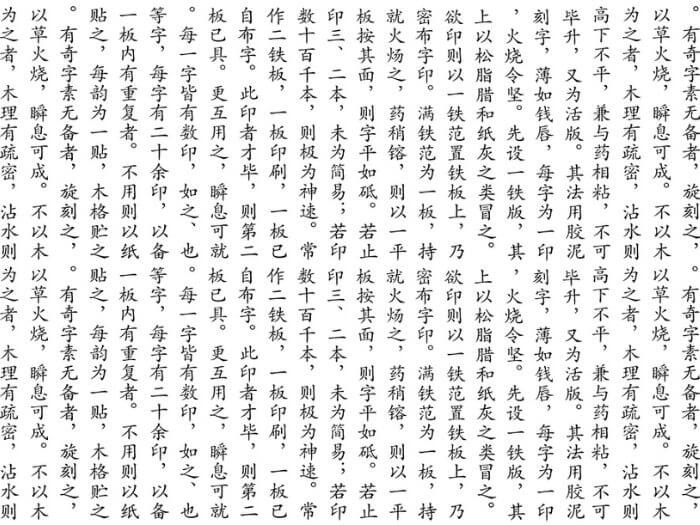
Chinese doesn’t have an alphabet with letters but instead uses Chinese characters, symbols that originally represented the thing they referred to pictographically.
This idea can still be seen in some modern Chinese characters such as 羊 yáng . It doesn’t take much imagination to understand why this is the character for “sheep”.
Chinese characters are the oldest writing system in the world that’s still in use today, and they date back to at least 1250 BCE when they were carved into oracle bones. However, due to the complexity of even these ancient characters, their origins are likely to be much earlier.
The important thing to understand about characters is that, unlike with an alphabet, you can’t work out what a character means or how to pronounce it from the way it looks. You can only read it if you already know it.
So how many are there? And how many do you need to learn?
The first question is difficult to answer, but some estimates suggest there are as many as 80,000 individual Chinese characters.
The good news, though, is that you don’t need to learn anywhere near that many.
To read a newspaper, you probably need to master about 3,000 characters – which is still a considerable challenge – and a university-educated native speaker will usually know about 8,000.
Some more good news is that there’s also a helpful official romanisation system called pinyin to lean on before you learn enough characters to read and write. Pinyin is used when typing Chinese characters too, and the system is easy to learn.
There’s one further complication though. In the 1950s, mainland China simplified around 2,000 characters to make them easier to write.
However, the change did not affect some Chinese-speaking countries like Taiwan and Hong Kong, and traditional characters are still used there – meaning there are two alternative writing systems currently in use.
Japanese Writing Systems
The situation with Japanese is a bit more complicated since it uses not one but three different writing systems concurrently, so let’s take a bit of time to look at how this works.
Kanji
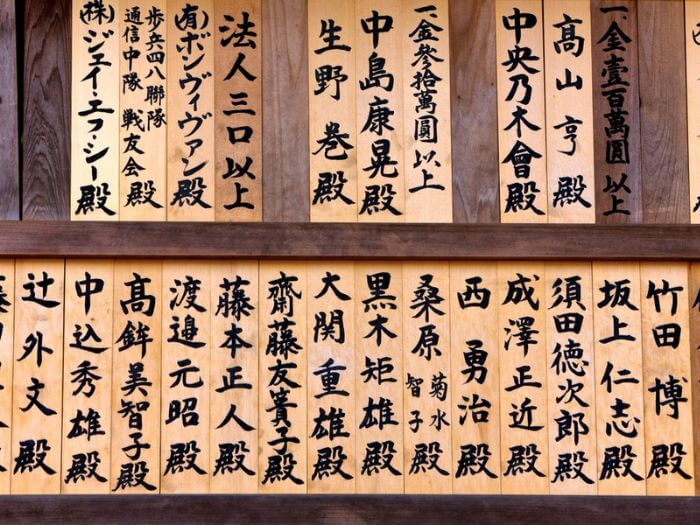
Until around the third century CE, Japanese was an oral language with no writing system, but from that time, people began to use Chinese characters to represent Japanese words.
Usually, the character used would be the one that had the same meaning as the Japanese word – but the pronunciation would be completely different.
For example, the Japanese word for “Japan” is 日本, which is pronounced nihon. In Chinese, it is also written as 日本, but it is pronounced rìbĕn.
Tokyo is 東京, pronounced tōkyō in Japanese. In traditional Chinese characters, it is written the same – but is pronounced dōngjīng.
This means a Chinese speaker will often be able to pick out recognisable words from Japanese text – but will still have no idea how the words are pronounced in Japanese.
Modern Japanese uses over 2,000 Chinese characters – based on traditional Chinese script – and in Japanese, they are known as Kanji.
Hiragana And Katakana
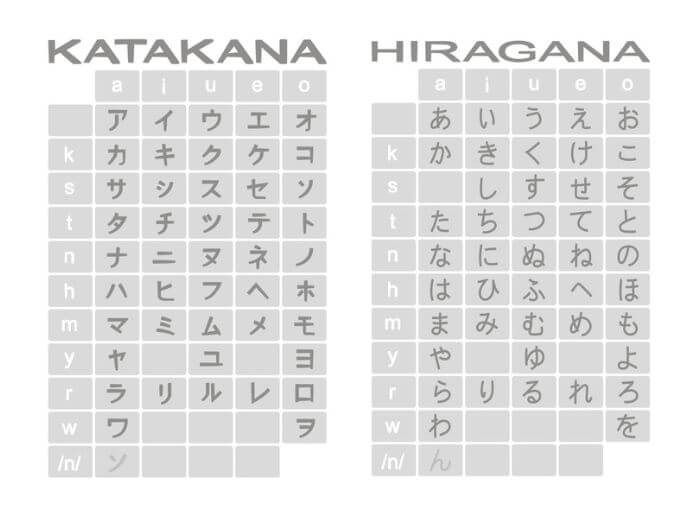
To make things easier, Japanese developed another way of writing that didn’t rely on Chinese characters – using what’s known as Hiragana and Katakana.
These are both true alphabets of 48 letters each, with each letter representing a sound. Hiragana is used to spell Japanese words phonetically and can be recognised as the curly symbols in Japanese writing.
Katakana, on the other hand, consists of more angular symbols and is mainly used for writing loanwords.
A Blend Of All Three
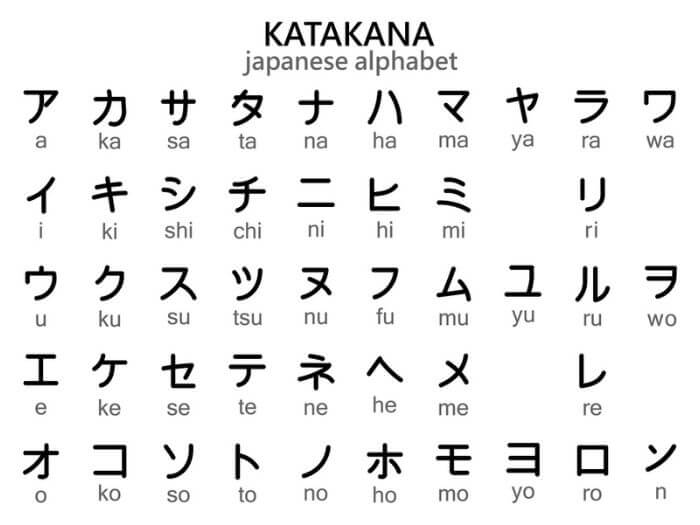
Modern Japanese uses a blend of all three systems. Although it’s possible to write phonetically using only Hiragana and Katakana, some words are just supposed to be written using Kanji. And not using the Kanji would seem uneducated.
Nevertheless, signs in places like the Tokyo subway are written in the ‘proper’ educated form above, with the phonetic version below for people who don’t know the Kanji.
The word is then written below that in ‘Romaji’ – Roman letters – for people who don’t speak Japanese!
For learners of Japanese, Hiragana and Katakana can be mastered in only around a week of serious study. But learning the full set of 2,000+ Kanji will take you a whole lot longer.
Typing Japanese is also a little complicated, but with modern software and a regular Romaji keyboard, it’s quick and easy to master.
You can tell Japanese writing apart from Chinese or Korean by the blend of complicated Chinese characters interspersed with cute, curly Hiragana and angular Katakana all in the same text.
Korean Writing System
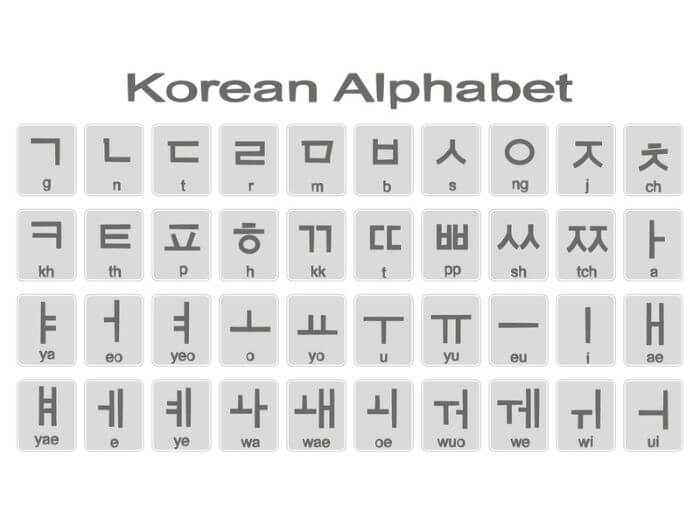
Korean writing is something different entirely.
Modern Korean is written in the Korean alphabet, known as Hangul, which is among the most perfect writing systems ever devised.
Hangul consists of 40 letters, with 21 vowels and 19 consonants. It can be learnt in a day – and you can be comfortable using it within a week. With a Korean keyboard, it is also easy to type.
Curiously, Hangul was first developed in 1443 CE at the behest of King Sejong the Great. But it only became widespread after the Second World War when Korea gained independence from Japan.
Before then, as in Japan, the Korean language was usually written in Chinese characters.
Once you get used to seeing it, Hangul is distinctive and easy to tell apart from Chinese or Japanese – some people describe the writing as looking like lots of cute faces while others say it reminds them of a game of Tetris!
Chinese vs Japanese vs Korean: Which Writing System Is Easier?
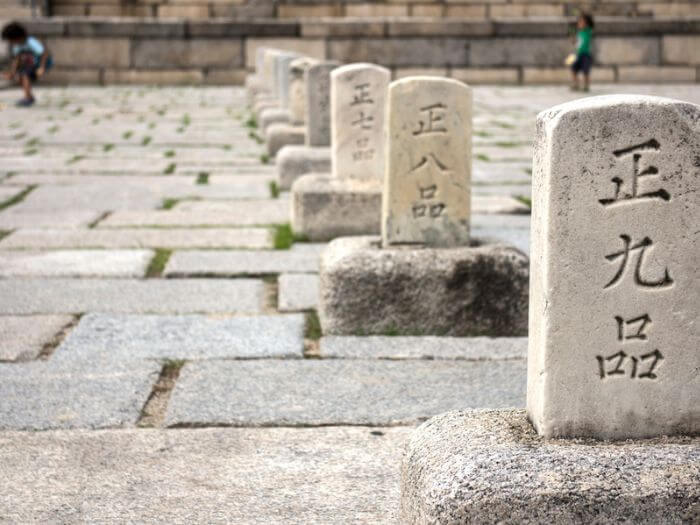
When it comes to the writing, Korean is by far the easiest of the three languages.
Since you can learn the alphabet so quickly, you can start reading simple Korean very early too, giving you an advantage because you’ll soon be able to progress to reading short texts and stories, an effective way to boost your studies. Hello StoryLearning method!
Learning Japanese Kanji will take a lot of time and effort, but at least Japanese has Hiragana and Katakana, which can help you get to grips with the language before you master enough Kanji to become more fully literate.
Special reading materials exist written exclusively in Hiragana and Katakana for students to start practising reading as early as possible.
With Chinese, on the other hand, you know from the outset that you’re going to have to put in the hours if you want to learn to read and write.
Chinese characters are not ‘hard’ to learn, you just need to be willing to work at it.
Even Chinese children need to spend several years learning to read and write characters. And if you want to claim literacy in Chinese, it’s something you’re going to have to do too because pinyin is no substitute.
Texts in pinyin exist but are not always easy to understand because of the nature of Chinese – graded Chinese readers that use only very common characters are a much better introduction if you want to start reading early on in your Chinese journey.
Chinese vs Japanese vs Korean: Grammar
Chinese Grammar

When it comes to grammar, you may be surprised to learn that Chinese is actually extremely easy.
While some Chinese grammar is very different from English, and the word order can be different too, Chinese follows the same basic subject-verb-object structure as English, making it less intimidating when you first start.
Additionally, Chinese has no ‘inflection’, a fancy way of saying Chinese words don’t change.
This means there are no conjugations, Chinese tenses, cases, or agreement. And Chinese nouns don’t even change to indicate singular or plural.
Of course, Chinese has its own way of expressing these things, but Chinese grammar is far easier than something like German, which requires you to learn all kinds of word endings before you can make even simple sentences.
Another important difference between Chinese and Japanese or Korean is that it has no system of honorifics.
Chinese has informal and formal words for “you” – 你 nĭ and 您 nín respectively – and also has polite or formal expressions, like any language. But that’s about it. And this lack of honorifics makes the grammar far easier than either of the other languages.
Japanese Grammar
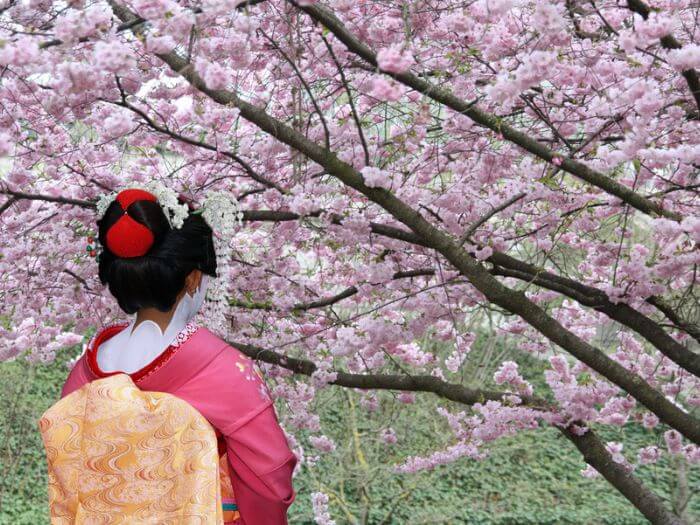
Unlike Chinese, Japanese grammar is notoriously hard.
Each verb has 13 different forms, and when you combine this with the various tenses, there’s a lot to learn.
Then there are the honorifics. Japanese has several different levels of politeness, depending on who you are speaking to (think tu and vous in French but multiplied), something that even native speakers sometimes get wrong.
Finally, Japanese sentences follow a subject-object-verb structure. Verbs come at the end of the sentence, with the topic being introduced at the start, something else that may be disconcerting for new learners.
Korean Grammar
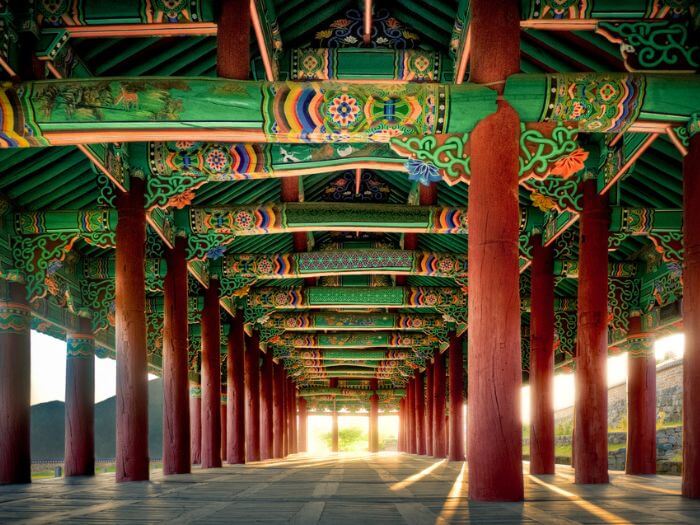
Like Japanese, Korean also has a complicated system of honorifics.
When you first meet a Korean, they will often ask you how old you are, and this is because they are trying to establish how to address you – different forms are required depending on which of you is older, which is younger and by how much.
In total, Korean has no fewer than seven levels of politeness – although, in daily life, only three are commonly used.
Like Japanese, Korean verbs have conjugations – but not as many. Korean also follows the same subject-object-verb structure as Japanese, so sometimes sentences can seem quite bizarre to English speakers.
However, Korean grammar feels slightly more logical than Japanese to English speakers, meaning you will probably be able to start constructing your own sentences a little quicker.
Chinese vs Japanese vs Korean Grammar: Which Is Easier?
When comparing grammar, Chinese comes out on top as the easiest language of the three.
Of the other two, most people will probably find Korean slightly less difficult to pick up – but neither of them could ever be considered easy.
Chinese vs Japanese vs Korean: Pronunciation
Chinese Pronunciation

Many of the sounds of Chinese are not difficult for English speakers to replicate, although some sounds, like the Chinese ‘r’, may take some getting used to. However, what sets Chinese apart is its use of tones.
In English, we have ‘intonation’, which means, for example, we can change a statement into a question by raising the tone of our voice at the end of the sentence – but tones are very different.
In tonal languages, the meaning of a word changes depending on the tone, and in Chinese tones, each syllable has four possible tones or can be neutral.
One striking example is mai.
If you pronounce this syllable with a tone that falls and then rises, it is the Chinese word 买 măi, meaning “to buy”.
However, if you pronounce it with a falling tone, it becomes 卖 mài. This word means “to sell”, which is the complete opposite – and the only difference is the tone.
To an English speaker, it might seem perverse to have words with opposite meanings separated only by the tone. But to a Chinese speaker, these words are as different as “line” and “lane” are to a speaker of English.
Needless to say, many people whose native language doesn’t have tones find this aspect quite tricky.
Japanese Pronunciation
Japanese pronunciation is far easier than Chinese, and one reason is that it has almost no sounds that are difficult for English speakers to produce.
Japanese has five vowels, all in long or short versions – but it has no diphthongs (a blend of two vowels). There are also around 15 consonants (depending on the dialect), with few posing any problems to English speakers.
It also features something called ‘pitch accent’ where the meaning of a word can change, depending on its ‘tone contour’ (something like the timing of the word stress). However, this is nowhere near as tricky as tones in Chinese and doesn’t usually cause difficulties.
Korean Pronunciation

Korean is probably somewhere between Chinese and Japanese in terms of pronunciation because while it doesn’t have tones, it does have certain sounds that are difficult for English speakers to pronounce.
For example, Korean doesn’t have the exact equivalent of the English ‘k’, but it does have three other sounds that are quite similar. And you need to learn to pronounce them correctly if you want Koreans to understand you.
Similarly, Korean also has some consonant-vowel combinations that are rare or not found in English, and these can be a challenge too.
The key to overcoming these problems is learning the Korean alphabet instead of relying on romanisation.
This is because it helps you learn the correct Korean pronunciation rather than pronouncing words as they are written in English.
Which Pronunciation System Is easier?
Japanese then Korean then Chinese – unless you happen to be good at tones, in which case, you might find Korean harder.
Chinese vs Japanese vs Korean: Vocabulary
In terms of vocabulary, you’re not going to get much help with loanwords from English – although they do exist.
For example:
- Chinese: 沙发 shāfā means “sofa”, 沙拉 shālā means “salad” 酷 kū means “cool”
- Japanese: ビール bīru means “beer” and トイレ toire means “toilet”
- Korean: 컴퓨터 ceompyuteo means “computer” and 피자 pija means “pizza”
There are far fewer recognisable words in Chinese, Korean or Japanese than if you choose something like French, Spanish or German.
So you can’t rely on loanwords or cognates to help boost your vocabulary ‘for free’ – you have to learn everything from scratch.
In general, Japanese and Korean have more loanwords than Chinese. And, very broadly, loanwords tend to be those related to modern things like computers or the kind of words used by young people.
Check out this fun YouTube video to see how Chinese, Japanese and Koreans pronounce different international words!

Chinese vs Japanese vs Korean: Usefulness
If you want to learn a new language for practical reasons, Japanese and Korean are both useful in the world of business.
Japan has long been a global leader in industry and is known, among other things, for car and electronics production. Names like Toyota and Sony are famous around the world.
In recent years, South Korea has also made a name for itself in the world of electronics and is home to brands like LG and Samsung.
For popular culture, both Korean and Japanese are also extremely attractive.
Fans of manga have long been drawn to Japanese – while more recently, the rise of K-pop and K-drama has seen a huge increase in people taking up Korean.
That said, with the world’s second-largest economy and as the language with the highest number of speakers, there’s a strong argument that Chinese is currently the most useful of the three languages to learn.
Chinese vs Japanese vs Korean FAQ
What's the difference between Chinese and Japanese and Korean?
Chinese, Japanese, and Korean are distinct languages with unique writing systems, grammar, and pronunciation.
Chinese (especially Mandarin) is a tonal language with characters that represent meaning rather than sound.
Japanese uses three scripts: kanji (adapted Chinese characters), hiragana, and katakana, and it has a complex grammar structure but no tones.
Korean uses an alphabet called Hangul, making it phonetic and straightforward to learn.
Korean and Japanese grammar share some similarities, while Chinese grammar differs significantly from both.
Which is harder Chinese or Korean or Japanese?
The difficulty varies by language background and learning goals. Chinese can be challenging due to its tones and extensive character system.
Japanese is hard for beginners because of its complex writing system and grammar, especially mastering kanji.
Korean is generally considered easier to start with, thanks to its simple phonetic alphabet, Hangul, but its grammar can become complex at advanced levels.
For most learners, Chinese is often considered the most challenging, followed closely by Japanese.
Chinese vs Japanese vs Korean: Choose The One That Interests You Most
Chinese, Japanese and Korean are all fascinating languages to learn from a language geek point of view as well as in terms of cultural richness and practical usefulness.
They are all ranked among the most challenging languages for English speakers to learn. But each has elements that are surprisingly easy too.
So which should you go for? Well, that’s up to you. If you are drawn to the culture of a particular country, that will answer your question. Or if you're interested in a particular feature of a language such as tones, that can also guide your decision.
However, if you still have no idea and just want to challenge yourself by learning a tough but rewarding East Asian language, put the names in a hat and pull one out.
Then, whichever one you get, you’re guaranteed to be taken on an enriching language-learning adventure that will probably last the rest of your life!

Olly Richards
Creator of the StoryLearning® Method
Olly Richards is a renowned polyglot and language learning expert with over 15 years of experience teaching millions through his innovative StoryLearning® method. He is the creator of StoryLearning, one of the world's largest language learning blogs with 500,000+ monthly readers.
Olly has authored 30+ language learning books and courses, including the bestselling "Short Stories" series published by Teach Yourself.
When not developing new teaching methods, Richards practices what he preaches—he speaks 8 languages fluently and continues learning new ones through his own methodology.










































